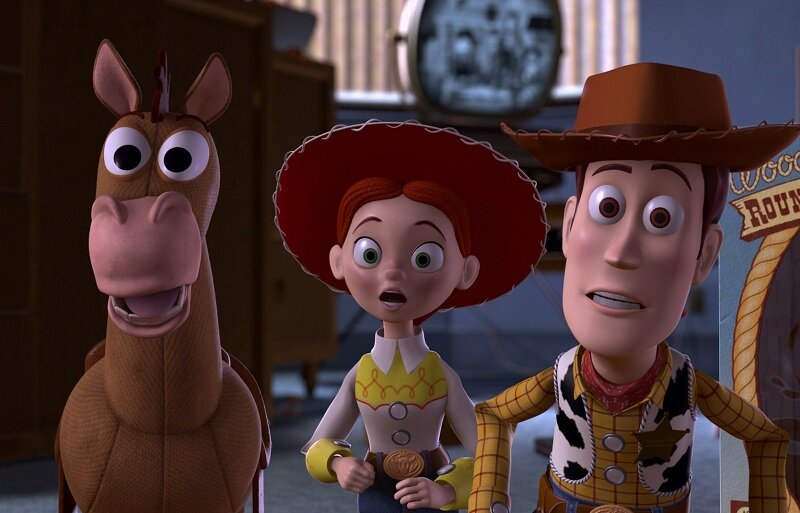Is Toy Story 2 Better Than The Original Toy Story?
Toy Story 2. Image courtesy of Pixar.
For Pixar’s third major theatrical release, they went back to the well and tried something they knew would work: more Toy Story! This was the superlative Toy Story 2 which was released in 1999 one year after A Bug’s Life. It grossed $497 million on a $90 budget, and has a 100% score on Rotten Tomatoes. It is in every way superior to A Bug’s Life. But is it better than the original Toy Story?
Usually when people claim the sequel is better than the original, it is because they are wrong and know nothing (see: The Godfather). With Toy Story 2 there is a plausible case to be made. Yet how can Toy Story 2 possibly be better, when Toy Story itself was essentially a flawless film that broke new cinematic ground in terms of technology and storytelling? Well, first let’s think about what makes a bad sequel. A bad sequel is when you take a good idea from a successful film and you simply do it again, but bigger and louder. We all know bad sequels - almost all sequels are bad sequels.
A good sequel takes the goodwill and the ideas and the characters from the first film and it gives us new information about them. In other words, a good sequel will leverage our familiarity with the original to expand the film’s universe and push the characters in new directions. The classic example is The Empire Strikes Back, where we learn new and exciting things about the Star Wars universe and about Luke, and are even introduced to classic new characters In Toy Story 2, we learn exciting new things about Woody and about the terrifying lives of sentient dolls.
New characters are introduced with fully fleshed out back stories and personalities. They expand the film’s world narratively and cinematically beyond the confines of the first film, and they do it in a way that is natural, satisfying and thematically consistent. We find out that Woody is actually a very valuable collectors item, and that he belongs to a set. The introduction of the new characters from the set is therefore a totally natural extension of this narrative framework - it makes sense, while expanding the Toy Story world and giving us more food for thought on the nature of life and the passage of time. You can’t ask for better writing when plotting a sequel.
This time they invert the roles a bit, with Woody needing to be rescued instead of Buzz, but a lot of thought went into coming up with a plausible, natural reason for this (later Pixar sequels have put considerably less thought into constructing the narrative justification for their own existence; but we will get to those later). Then there are great callbacks to the original, like new Buzz Lightyears rolling off the shelf not knowing that they are toys and the introduction of Emperor Zurg.
In every way Toy Story 2 expands the world of the first film, and it never feels forced. It’s a pure joy to be back in the world they created in 1995. The animation is better, thanks to technological advances. And the story is just as good if not better. I think Toy Story 2 might actually be funnier, on a pound for pound basis. So, that brings us back to the question: is it better than the original? That, I cannot say but as far as sequels go, Toy Story 2 offers a clinic in how to do it right. Whether it surpasses the original is not a question for me, but a question for God.





